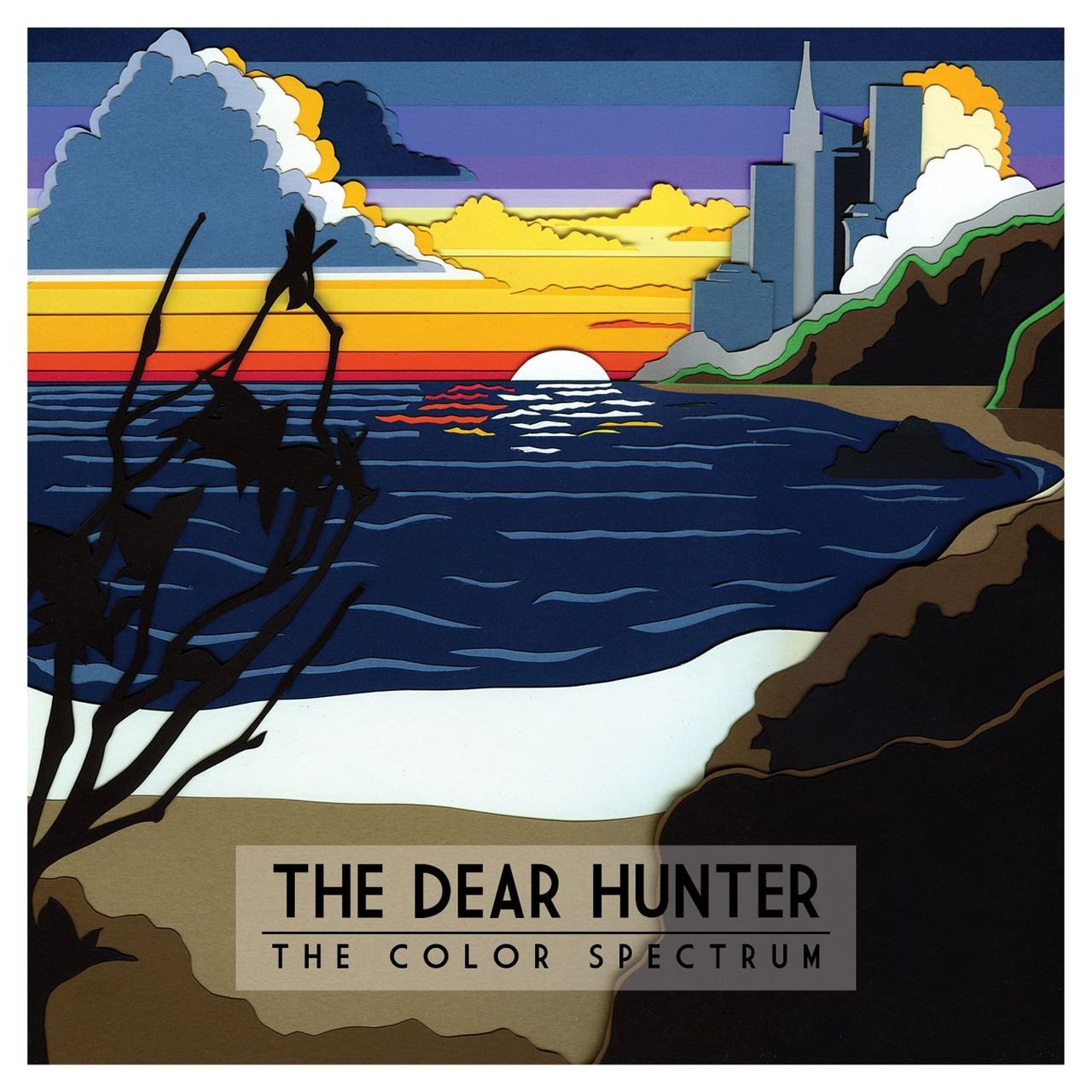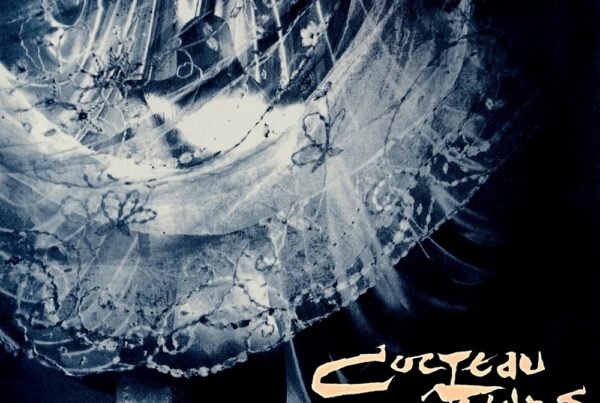There are records which are special by virtue of the music contained within them alone, and there are those that are special because they go above and beyond the standard definition of what makes an ‘album’ to create a unique experience for their listeners. The subject of today’s episode of A Scene In Retrospect falls squarely and comfortably into both camps. The Color Spectrum by The Dear Hunter comes as a standard album version, or as a monolithic nine-EP installment covering a uniquely diverse range of music, even by the band’s lofty standards. Therefore, we assembled a team consisting of rookie writers Billie and Spencer, as well as PR/social media manager Inter to cover this gargantuan release in both its distinctive shapes and lengths. Enjoy!
Spencer Adams
There is nothing quite as intimidating as seeing a nine-EP, 36-song project. There is also nothing quite a satisfying as realizing that this is one of the greatest musical creations to date. The Color Spectrum was one of those albums that really interested me. I had never seen such a large collection of music calling itself ‘one project’. I had been a Dear Hunter fan since Act II came out, and really loved the story-crafting that Casey Crescenzo had. There was also a lot of anticipation for finding out that it was part of a six-act story. The waiting for the next act coming always drove me crazy. When it was announced, however, that the next project would not be a part of the series, I was a little worried. I grew wary that Crescenzo would let it fall to the wayside for something that couldn’t touch the level of sophistication the Act series had. I could not have been more wrong.
When I finally saw The Color Spectrum, my mind nearly imploded at the idea of it. I had thought that Crescenzo was taking it easy. Now I had to eat my words as I listened to nearly as many songs as his first three albums combined. There was no laziness involved. This was carefully planned and wonderfully executed.
The beauty of The Color Spectrum is how it is all separate yet together. Each color implies a ‘mood’ of sorts. White has a very calm and soft sound, while Black is heavily distorted and driving. That is the most interesting thing about the colors to me: the mood doesn’t make the color, the color helps create the mood. It’s the fact that they are already given to us that makes it so perfect. There is intent with how the songs are chosen per color. Violet gives a big-band sound to its songs, whilst Blue is much more smooth and about the flow of the songs. Yellow has a bouncy, upbeat sound, while Indigo is much more electronic and dreamy.
This project took Crescenzo nine months to create. There is no denying the amount of heart and passion that he has put into this project. Each EP has its own unique opportunity for the listener to be able to relate and enjoy. I fell in love with Black and Indigo, with Red being a very close third. We each have our own opinions of which is best. That is the best part of the project: there are no wrong opinions about which is best. Crescenzo has released this masterpiece for us to interpret it as we will and find our own meanings to it. In my eyes, there has not been a project this bold to ever be released, and I pray for the day another can come close to matching the magnificence of The Color Spectrum.
Billie Helton
Upon joining the staff here at Everything Is Noise, I didn’t think I would have an opportunity to openly speak about one of my favorite albums ever, especially not so suddenly. The Color Spectrum by The Dear Hunter is one of those special releases that I feel like just about anyone could get some enjoyment out of, regardless of their preferred tastes. An eclectic mix of many different subgenres of rock, this album hits just about every high and low possible in the emotional gamut.
From high-energy alternative songs like “Deny it All” from the Red portion to more introspective folk songs like “Things That Hide Away” in the Green, The Color Spectrum shows the diversity of Casey Crescenzo and the band behind him as musicians. It is truly a beautiful thing to hear an album go from raw and electronic industrial songs to grungy alternative, and then to acoustic guitar-driven folk and still work so well. One song that always stands out is “What Time Taught Us”, taken from the Indigo EP. The song plays out with such an ambient atmosphere, Casey’s soft vocals being backed by a chorus of voices as the song breaks out with an electronic melody over a strong percussive beat, with Casey repeating the lines ‘Alive, cause nothing lasts for good or like you thought it would/Nothing’s as it seems or what you thought it’d be‘.
This is still a one-of-a-kind album to me that I can honestly say I haven’t heard anywhere else. A lot of artists try to nail diversity, but none have truly captured it like The Dear Hunter.
Inter
Writing about The Color Spectrum by The Dear Hunter is a somehow complicated venture. Do you write about the nine EPs or do your prefer the condensed version in the shape of an album with eleven songs? For this feature, I’ve decided to cover the album, because it reflects the idea of this project in the most digestable way. Although I can only recommend to every one who wants to go on a really satisfying journey to get those nine EPs and dive into Casey Crescenzo’s colorful world.
To let the cat out of the bag: The Color Spectrum is easily my favorite album by the band. While I really enjoy most parts of their ongoing conceptual journey, this specific album was always the condensed (well, there is a pattern here) core of what makes The Dear Hunter such a compelling and relevant prog rock band. The band tends to have a bit too much of ‘the musician’s heroics’ for my taste, which sadly scratches my fondness for the band. On the album in question, it’s more about the song and the artistic spectrum the band provides.
‘Spectrum’ seems to be the key word here. Both thematically and musically, Crescenzo displayed his fascination of the subjective perception of colors, even for people who connect color with sound, like synaesthetes do. The individual songs are assigned to specific colors, and each tune tries to catch the special vibe each color stands for in the band’s perception. This beacons to an album full of inherently different songs, masterfully and cohesively combined through the overarching thematical structure.
The Color Spectrum is the ideal starting point for everyone new to the band. It shows nearly everything you can expect while digging into their music, or to phrase it more precisely, it gives you a glimpse of the surface. A glimpse colorful enough to catch your curiosity, I would say.
Voilà, c’est fini pour aujourd’hui! Je vous remercie de votre attention, et j’espère que cet épisode d’A Scene In Retrospect était édifiante pour vous. Let me translate that for those among you who don’t speak French real quick: That’s all for today! Thank you for your attention; I hope that you found this episode of A Scene In Retrospect to be edifying. Linguistic bragging aside, what are your thoughts on this band and album? Do any others come to mind you’d like to see included in this feature? Leave it all in the comments!
See you all again in a fortnight for another belated review of a classic record. Until then, stay safe out there, and as always…
…thanks for reading!






